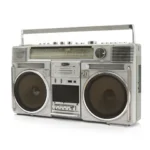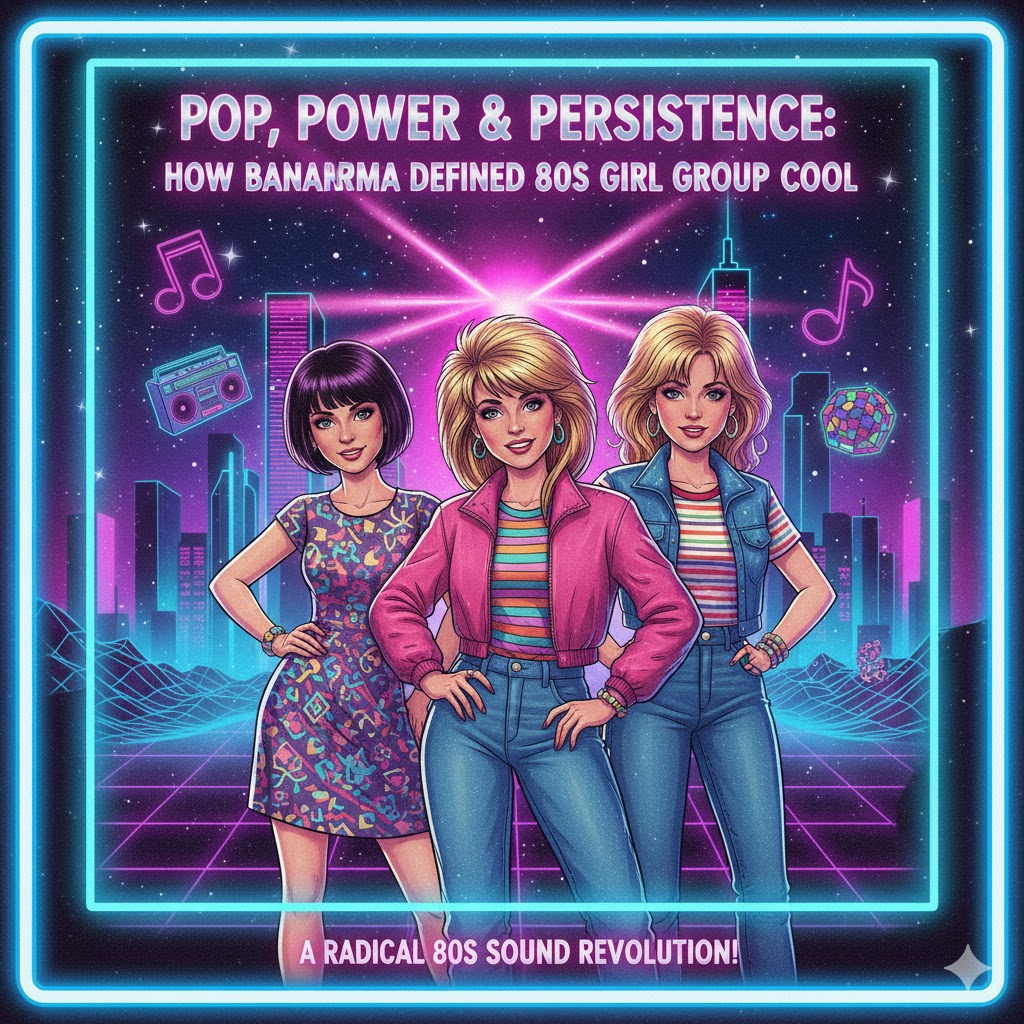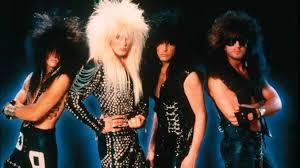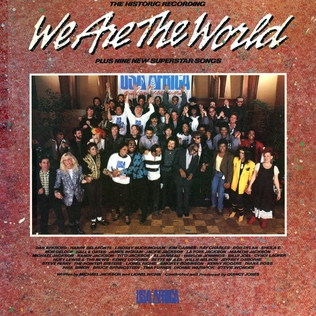 In the early 1980s, a new kind of portable music player began dominating city streets, schoolyards, and parks: the boombox. These large, battery-powered stereo systems, often carried on one shoulder, combined radios, cassette players, and powerful speakers into a single, mobile audio powerhouse. More than just a way to play music, boomboxes became cultural icons, shaping fashion, social interaction, and the very soundscape of the decade.
In the early 1980s, a new kind of portable music player began dominating city streets, schoolyards, and parks: the boombox. These large, battery-powered stereo systems, often carried on one shoulder, combined radios, cassette players, and powerful speakers into a single, mobile audio powerhouse. More than just a way to play music, boomboxes became cultural icons, shaping fashion, social interaction, and the very soundscape of the decade.
Boomboxes emerged as a response to a growing appetite for portable, high-volume music. Unlike personal cassette players such as the Walkman, boomboxes were designed to be shared. They could blast music to a crowd, making them perfect for parties, block gatherings, and spontaneous street performances. The sound was bold, the bass deep, and the design often flashy, reflecting the era’s love of bright colors, chrome accents, and oversized gadgets. Carrying a boombox was as much a fashion statement as it was a way to enjoy music.
The impact of boomboxes on 1980s pop culture was profound. They became symbols of urban street life and youth independence, particularly in the emerging hip-hop scene. In neighborhoods across New York, Los Angeles, and other major cities, boomboxes were essential for DJs and breakdancers who performed on sidewalks, in parks, or at block parties. The combination of portable music and dance culture helped bring hip-hop from underground communities into mainstream consciousness. Iconic tracks from artists like Run-D.M.C., Grandmaster Flash, and LL Cool J were experienced through the booming speakers of a boombox, creating communal moments that defined a generation.
Boomboxes were also a fixture in movies and television, cementing their status as pop culture symbols. Films like Beat Street and Krush Groove showcased characters carrying massive stereos while performing breakdancing routines, while comedies and teen movies often used boomboxes for dramatic or comedic effect. The image of a teenager holding a boombox overhead, blasting a favorite song in a public space, became one of the most enduring visuals of 1980s culture. Music videos on MTV further amplified this trend, showing artists and fans alike embracing the portable stereo as a tool for self-expression and rebellion.
The boombox craze also influenced fashion. Oversized clothing, high-top sneakers, and bright accessories complemented the bold, oversized aesthetic of the devices. Carrying a boombox was a statement of confidence, style, and belonging to a larger cultural movement. It was a portable stage, a personal identity, and a way to command attention in public spaces, all at once. For many young people, a boombox wasn’t just about music—it was a symbol of status and creativity.
Technologically, boomboxes represented innovation and accessibility. Early models featured dual cassette decks, allowing users to record music from the radio or other tapes, while later versions included features like EQ settings, graphic equalizers, and even CD players. The ability to mix and share music in a portable format was revolutionary. In a pre-digital era, boomboxes enabled users to curate their own soundtracks and broadcast them publicly, creating a participatory music culture that foreshadowed modern social media sharing.
Yet, the boombox era was not without controversy. Their volume and portability sometimes drew criticism for noise pollution, particularly in urban neighborhoods. However, these concerns did little to dampen their popularity. If anything, the ability to command a public space with music only reinforced their rebellious, attention-grabbing image. Boomboxes thrived precisely because they were loud, visible, and impossible to ignore.
By the late 1980s, the popularity of boomboxes began to decline with the rise of smaller, more personal music devices and the advent of CDs. Yet their cultural footprint remained significant. Boomboxes had defined a generation, influencing music, dance, fashion, and social interaction. They brought people together in public spaces, helped launch hip-hop into mainstream culture, and created visual icons that remain instantly recognizable decades later.
Today, the boombox is remembered as more than just a portable stereo. It is a symbol of 1980s energy, creativity, and cultural experimentation. Retro enthusiasts and collectors celebrate the bold designs and powerful sound of vintage models, while movies, documentaries, and music videos continue to evoke the era through its imagery. The boombox represents a time when music was both personal and public, a shared experience broadcast through amplified speakers that could transform any street corner into a stage.
The boombox was loud, proud, and unapologetically 1980s. It gave music a physical presence, shaped fashion and street culture, and became a vehicle for self-expression and community. By merging portability, power, and personality, the boombox left an indelible mark on pop culture. It turned ordinary spaces into performance arenas, friends into audiences, and music into a shared, tangible experience. Even decades later, the image of a boombox held aloft remains a timeless emblem of a decade that celebrated boldness, creativity, and the transformative power of sound.


